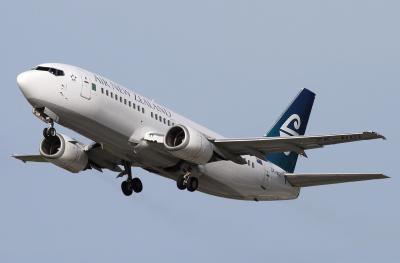Boeing 737-300, ZK-NGI, Loss of cabin pressure, near Raglan, Waikato, 30 August 2013
Status
Closed
Occurrence Date
Report Publication Date
Jurisdiction
NZ
On 30 August 2013 a Boeing 737-300 aeroplane operated by Air New Zealand was on a scheduled service between Wellington and Auckland. After the aeroplane began its descent to Auckland, it lost cabin pressure. The pilots commenced the relevant emergency procedures and made a normal landing at Auckland Airport. No-one was injured and the aeroplane was not damaged.
The Transport Accident Investigation Commission (Commission) was unable to identify the cause of the depressurisation despite extensive testing and a specialist examination of the pressurisation system. An intermittent defect within the air-conditioning and pressurisation system could not be excluded as the cause.
The Commission made findings relating to the following safety issues:
- non-adherence to the published emergency checklists for a loss of cabin pressure
- the training of cabin crew in the use of the emergency oxygen equipment and the cabin depressurisation procedure.
The operator acted to correct these issues. Therefore the Commission made no recommendations regarding them.
In addition, the inquiry considered the potential for the cabin to be pressurised on the ground following the use of the Cabin Altitude Warning checklist. Boeing subsequently amended the checklist to reduce that risk.
The key lessons identified from the inquiry into this occurrence were as follows:
- an unexpected loss of cabin pressure in any aeroplane is a serious event that can cause both passengers and crew to lose consciousness rapidly from a lack of oxygen. In such an event the appropriate emergency actions must be undertaken immediately. Where oxygen masks are fitted, passengers and cabin crew must put on their masks and await further instruction from the flight crew
- the purpose of emergency procedure checklists is to ensure that crew members do not miss an important action at a critical time of high workload. Therefore, unless the captain has an exceptional reason to deviate from a checklist, it should be performed from beginning to end, if possible without interruption, and without omitting any step
- crew members must be thoroughly trained in and familiar with all emergency equipment and procedures, because the equipment and procedures are for their own protection as well as that of the passengers. They need to be alert for emergency situations that differ from the standard scenarios that are practised and demonstrated repeatedly
- an aircraft door will be very difficult to open on the ground while the cabin is still pressurised, and this can delay an evacuation if it is called for. When pilots have been controlling the cabin pressure manually, they must ensure that the cabin is fully depressurised to allow the doors to be opened
- special care must be taken with the maintenance of aircraft emergency equipment, such as oxygen systems.
The Transport Accident Investigation Commission (Commission) was unable to identify the cause of the depressurisation despite extensive testing and a specialist examination of the pressurisation system. An intermittent defect within the air-conditioning and pressurisation system could not be excluded as the cause.
The Commission made findings relating to the following safety issues:
- non-adherence to the published emergency checklists for a loss of cabin pressure
- the training of cabin crew in the use of the emergency oxygen equipment and the cabin depressurisation procedure.
The operator acted to correct these issues. Therefore the Commission made no recommendations regarding them.
In addition, the inquiry considered the potential for the cabin to be pressurised on the ground following the use of the Cabin Altitude Warning checklist. Boeing subsequently amended the checklist to reduce that risk.
The key lessons identified from the inquiry into this occurrence were as follows:
- an unexpected loss of cabin pressure in any aeroplane is a serious event that can cause both passengers and crew to lose consciousness rapidly from a lack of oxygen. In such an event the appropriate emergency actions must be undertaken immediately. Where oxygen masks are fitted, passengers and cabin crew must put on their masks and await further instruction from the flight crew
- the purpose of emergency procedure checklists is to ensure that crew members do not miss an important action at a critical time of high workload. Therefore, unless the captain has an exceptional reason to deviate from a checklist, it should be performed from beginning to end, if possible without interruption, and without omitting any step
- crew members must be thoroughly trained in and familiar with all emergency equipment and procedures, because the equipment and procedures are for their own protection as well as that of the passengers. They need to be alert for emergency situations that differ from the standard scenarios that are practised and demonstrated repeatedly
- an aircraft door will be very difficult to open on the ground while the cabin is still pressurised, and this can delay an evacuation if it is called for. When pilots have been controlling the cabin pressure manually, they must ensure that the cabin is fully depressurised to allow the doors to be opened
- special care must be taken with the maintenance of aircraft emergency equipment, such as oxygen systems.
Location
Auckland (-37.790800,174.636300) [may be approximate]

